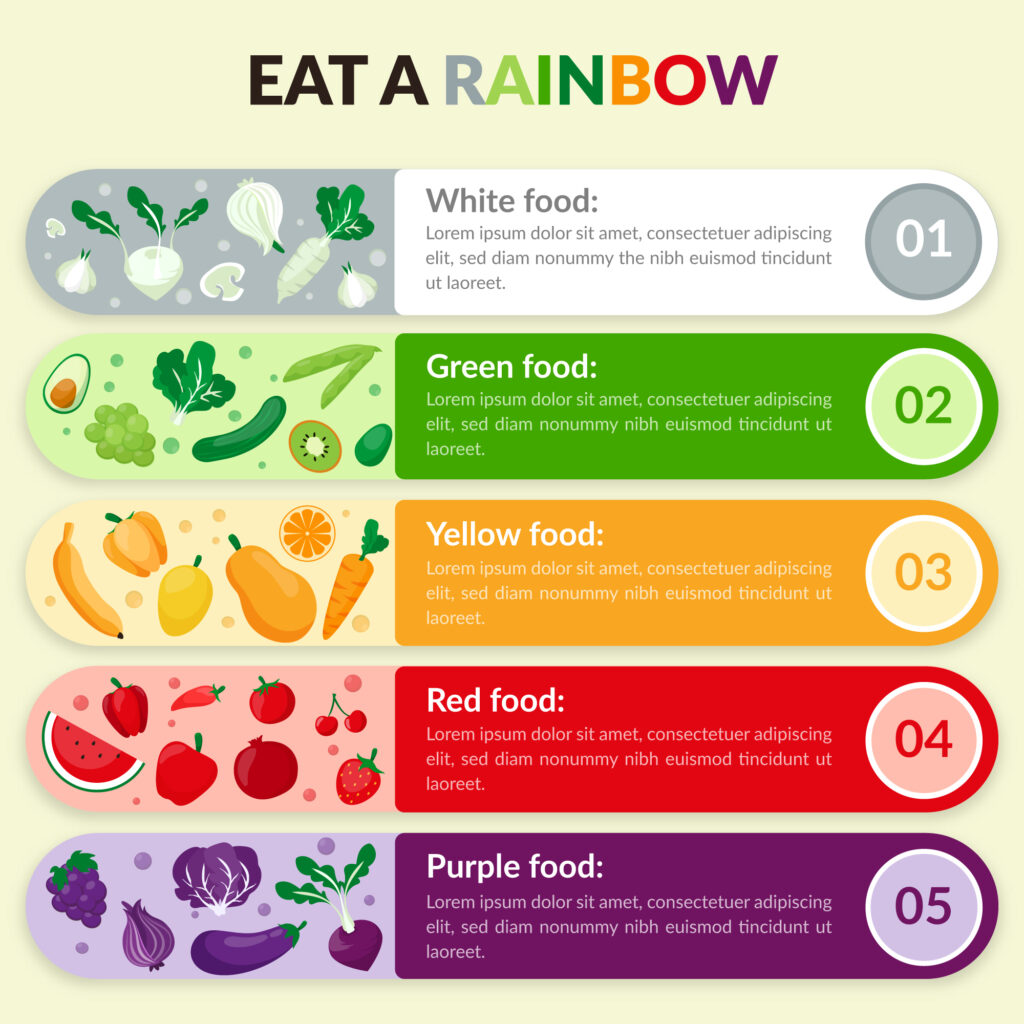Introduction:
- Share that this blog is about eating well to stay healthy.
- Mention that the balanced diet chart is created especially for Asian people, considering their food preferences and traditions. A Balanced Diet Chart for Asian Peoples
(Balanced diet chart, Asian People)
The Essence of Balance in Asian Cuisine:
- Explain that Asian cultures often focus on eating different kinds of foods to stay healthy.
- Talk about how the idea of balance is important in Asian cooking and eating.
Core Components of the Asian Balanced Diet:
- Say that the main parts of Asian meals are grains, vegetables, proteins, and healthy fats.
- Mention that foods like rice and noodles are important in Asian diets.

Crafting an Asian-Inspired Balanced Diet Chart:
- Show a sample chart with Asian foods for different meals of the day.
- Give ideas for breakfast, lunch, dinner, and snacks using foods Asians like to eat.
Embracing a Rainbow of Vegetables and Fruits:
- Explain that it’s important to eat many colorful vegetables and fruits.
- List some Asian vegetables and fruits that are good for health.
Lean Proteins from Land and Sea:
- Talk about foods like tofu, fish, chicken, beans, and meats that have proteins.
- Mention how plant-based proteins are also good in Asian diets.
Wholesome Grains and Fiber-Rich Foods:
- Say that Asian people eat grains like brown rice, quinoa, and whole wheat.
- Explain that foods with fiber help keep our stomach healthy and make us feel full.
Healthy Fats in Asian Cooking:
- Talk about good fats from things like nuts, seeds, avocados, and oils used in Asian cooking.
- Share how these fats can make food taste better.
Seasonings and Spices for Flavor and Health:
- Introduce things like spices and seasonings that make Asian food tasty and might be good for health.
- Mention spices like turmeric, ginger, and garlic that are used in Asian cooking.
Fluid Balance: Hydration and Herbal Teas:
- Explain the importance of drinking water and herbal teas in Asian diets.
- Share that some teas might have health benefits.
Cultural Celebrations and Balanced Eating:
- Say that special occasions in Asia often have foods that are balanced and good for health.
- Share how Asian people celebrate with foods that make them feel good.

Nourishing Traditions: Designing a Balanced Diet Chart for Asian Lifestyles
- Introduce the cultural diversity and culinary heritage of Asia.
- Explain the importance of a balanced diet in maintaining health and wellness while honoring the unique flavors of Asian cuisine.
Part 1: Embracing Asian Culinary Wisdom
1. The Fusion of Flavour and Nutrition:
- Explore how traditional Asian diets emphasize a harmonious blend of taste and nourishment.
- Discuss the connection between balanced eating and cultural values in Asian societies.
2. The Essence of Yin and Yang:
- Explain the concept of Yin and Yang in Asian philosophy and how it relates to food balance.
- Highlight the importance of achieving equilibrium through a variety of food choices.
Part 2: Crafting Your Asian Balanced Diet Chart
3. Building a Wholesome Foundation:
- Provide a sample balanced diet chart with Asian-inspired foods for breakfast, lunch, dinner and snacks.
- Showcase the inclusion of whole grains, lean proteins, vegetables, fruits, and healthy fats.
4. Personalization for Palate and Culture:
- Encourage readers to tailor their diet chart based on regional preferences and dietary needs.
- Share tips for adapting traditional recipes to align with balanced eating principles.
Part 3: Nutrient-Rich Treasures of Asia
5. Plant-Powered Protein:
- Highlight plant-based protein sources like tofu, lentils, and beans commonly enjoyed in Asian diets.
- Discuss the benefits of reducing meat intake and incorporating plant-based options.
6. Asian Superfoods for Wellness:
- Introduce nutrient-dense ingredients such as seaweed, turmeric, and mushrooms, often featured in Asian cuisine.
- Explain their potential health advantages and culinary versatility.
Part 4: Flavors, Moderation, and Mindfulness
7. Balancing the Five Flavors:
- Explore incorporating sweet, sour, bitter, salty, and umami tastes in Asian meals.
- Provide examples of dishes that exemplify a symphony of Flavors.
8. Savoring Every Bite:
- Discuss the practice of mindful eating in Asian cultures and how it fosters a deeper connection with food.
- Share techniques for savoring each meal and avoiding overindulgence.
Part 5: Overcoming Dietary Challenges
9. Making Healthful Choices When Dining Out:
- Offer strategies for maintaining a balanced diet while eating at Asian restaurants.
- Discuss portion control, ingredient awareness, and menu navigation.
10. Celebrating Occasional Indulgence:
- Emphasize the significance of balance, allowing for occasional indulgences in traditional Asian treats.
- Provide suggestions for modifying recipes to create healthier versions of beloved dishes.
Best Diet Chart
Breakfast:
- Scrambled eggs or a bowl of porridge (rice or oats)
- A small serving of yogurt or soy yogurt
- Slices of fresh fruit like mango or banana
Lunch:
- Grilled chicken or tofu with a side of brown rice or noodles
- Steamed vegetables such as broccoli, carrots, and bok choy
- A light soup with vegetables or tofu
Snack:
- Handful of mixed nuts or seeds
- A piece of whole fruit like an apple or orange
Dinner:
- Fish or lentil curry with a portion of quinoa or roti
- Stir-fried vegetables with tofu or lean meat
- A small salad with cucumber, tomato, and greens
Snack:
- Rice cakes with hummus or peanut butter

Notes:
Stay hydrated with water, herbal teas, or light beverages.
Remember, everyone’s needs are different, so adjust portions if needed.
This balanced diet chart offers a simple guide to eating well in a way that aligns with Asian food preferences and cultural practices. Feel free to adjust the foods based on your individual tastes and dietary requirements.
Conclusion:
- Summarize the main things about the balanced diet chart for Asian people.
- Remind everyone that eating balanced meals, like the ones in the chart, helps Asian people stay healthy and feel good.







